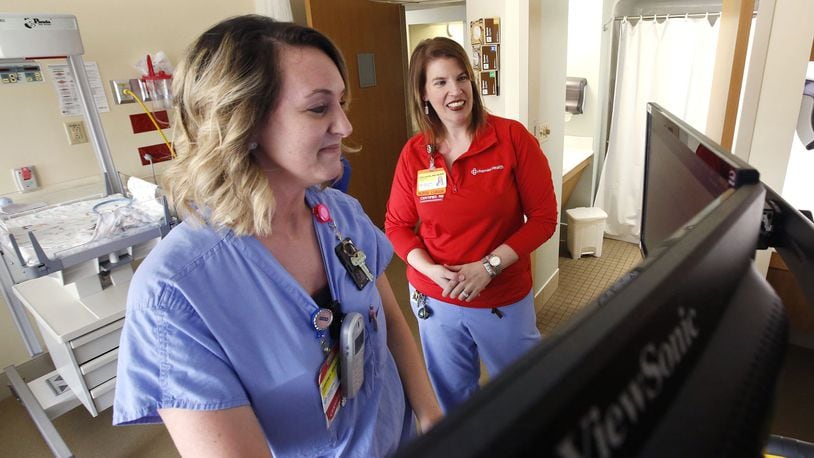However, several nursing groups say medical facilities that are short on nurses need to look at underlying issues for open positions. Many nurses, they say, are leaving the field because they feel burned out.
The Ohio Nurses Association is advocating Ohio ban mandatory overtime as a step toward helping keep more nurses from leaving the field.
House Bill 144, sponsored by Rep. Don Manning, R-New Middletown, would ban mandatory overtime. A similar measure was also considered during the last legislative session, but it did not pass.
Brian Burger, president of Ohio Nurses Association, said mandatory overtime means overworked nurses, and that puts patient safety is at risk. Representatives for the Ohio Hospital Association said during debates over the proposal last year that staffing is complicated and that hospitals need to have the flexibility to schedule according to need.
Burger said demands pile up on nurses from not just overtime but also things like patient caseloads and the time-consuming task of keeping up electronic health records. He said there’s not a workforce shortage so much as there’s a retention problem. Banning mandatory overtime would be one piece of creating the environment to keep nurses, he said.
“We’re getting nurses. The problem is keeping the nurses,” Burger said.
According to a report by Georgetown University Center on Education and the Workforce, of the 5.2 million licensed nursing professionals in 2013, only 3.6 million worked as a nurse during that time. Among 25- to 54-year-old RNs with an active license, 44 percent of those who at the time did not work in nursing cited workplace-related issues, such as burnout, scheduling, the physical demands of the job, inadequate staffing, and low pay relative to other opportunities, the report said.
Yvonne Curington, a retired southwest Ohio RN still active with National Nurses United, said the real challenge facing nurses isn’t required overtime so much as it is too many patients per nurse. She said hospital patients increasingly have multiple chronic diseases, which means they require more nursing care, and there are too many nurses leaving hospital bedside care jobs because they are overwhelmed by their patient caseloads.
“I don’t know if there is a nursing shortage so much as there is a shortage of nurses willing to work at the bedside and give one-on-one care,” she said.
Premier Health, parent company of Atrium Medical Center in Middletown, does not require nurse overtime, instead filling needs with incentives for volunteering for overtime.
Both major hospital networks in the region, Premier Health and Kettering Health Network, which owns Fort Hamilton Hospital in Hamilton, said they have turnover rates lower than the national average, which is about 17 percent. Neither could give their specific turnover rate.
Turnover also comes from an aging workforce as nurses retire. About 30 percent of Ohio RNs were 55 or older as of 2017, according to the Ohio Board of Nursing.
Julie Vincent, Kettering Health Network chief nursing officer, said they’ve had to adapt how they onboard new nurses as long-time mentoring nurses retire. She said they have had to make sure they have the right supports for their new nurses and that they can identify knowledge gaps.
“All of those things are changing pretty rapidly in nursing as we see new nurses come in to meet the needs, but of course they are with less experience so how we develop our education programs is important,” Vincent said.
Vincent said turnover also comes from growth in the health care field and from more nurses wanting to move into advance practice roles, such as nurse practitioners or nurse midwives. While the number of RN jobs is supposed to grow by 15 percent by 2026, the Bureau of Labor Statistics reports the advance practice nurse field is expected to increase by 31 percent.
About the Author
